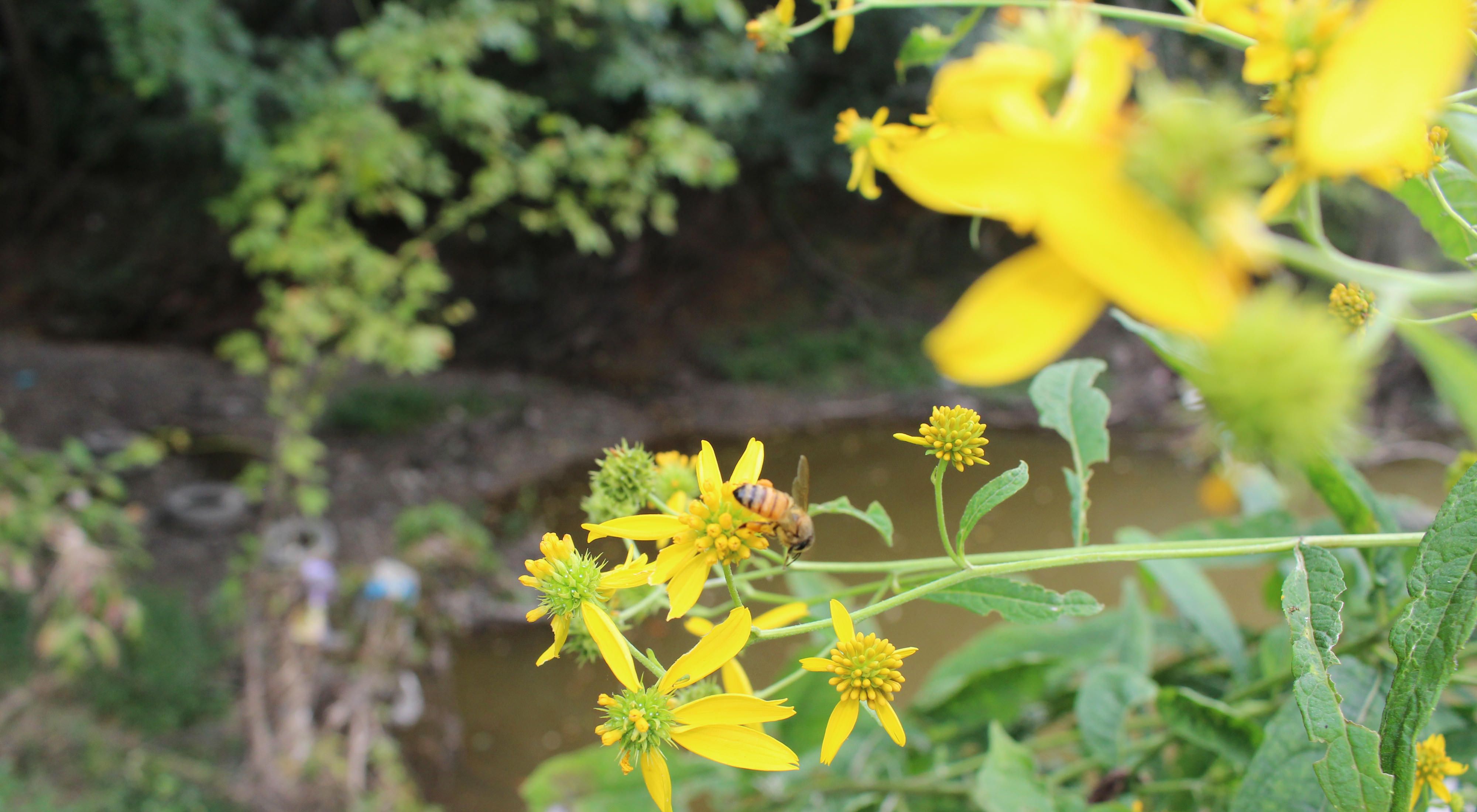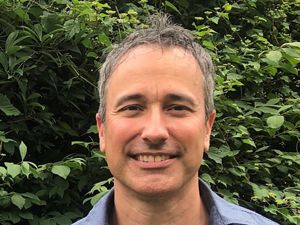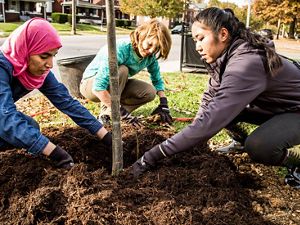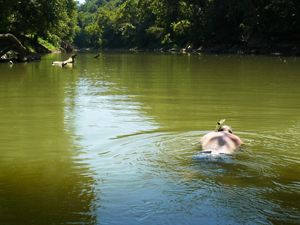Mill Creek Restoration
The Nature Conservancy and partners restore an urban watershed near Louisville.
The Nature Conservancy was selected as an independent, third party recipient of settlement funds dispersed in accordance with a Consent Decree signed between LG&E and Sierra Club to resolve a lawsuit over water discharged from LG&E’s Mill Creek Generating Station under a permit issued by the Kentucky Division of Water. As a result, TNC is charged with directing settlement funds towards ecological enhancement projects along the Green River and in the Mill Creek watershed, a 34-square-mile basin located in southwest Louisville.
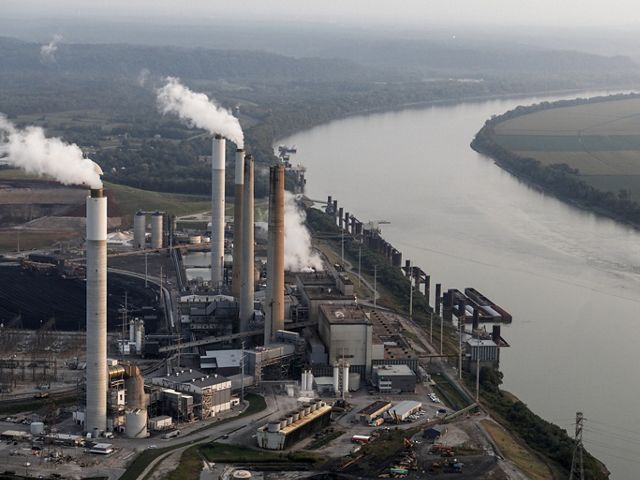
Urban Watershed
The Mill Creek watershed is highly urbanized, comprised of approximately 13 percent forest cover, three percent agriculture and 78 percent urban/suburban land uses that have resulted in impervious surfaces such as roads, rooftops and driveways. The combination of these surfaces, and a lack of adequate vegetated cover, contributes to run-off leading to poor stream quality.
The impervious surfaces present in the Mill Creek watershed also fuel an urban heat island effect, where temperatures in an urban area exceed what is felt in surrounding suburban and rural communities after concentrations of pavement—streets, rooftops, parking lots and other surfaces—absorb and retain more heat than the parks, yards, forests and other natural areas they have replaced.
The increase in impervious surfaces, together with the heat island effect, result in air and water pollution, a lack of natural habitat to support wildlife, and fewer places for people to relax in nature.
"Restoring urban watersheds, like Mill Creek, brings nature back into the city," says Catherine Fitzgerald, TNC’s Louisville-based cities project manager. "People need nature, and nature needs us. An integrated, holistic approach to increasing urban greenspace aims not only to benefit the natural landscape within cities—and life downstream—but also to benefit us as individuals and as communities."
This is what TNC is working to achieve in the Mill Creek watershed.
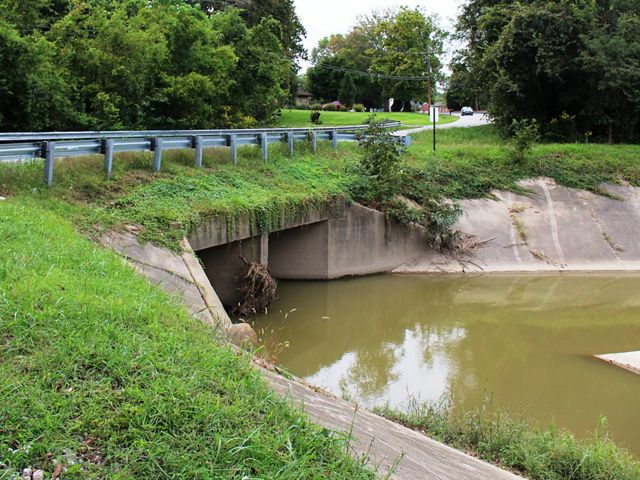
Conservation In Action
At Mill Creek, TNC is spearheading science-based enhancement projects throughout watershed to increase forest cover and improve water quality. Reforestation and other greening efforts in the watershed will also help contribute to cleaner air, cooler temperatures that create a healthier and more liveable Louisville for all of its residents. Ultimately, this work will also play a key role in restoring and maintaining the chemical, physical and biological integrity of the Ohio River, located further downstream.
Some of the conservation projects emerging from this effort include replacing concrete buffers with trees and other vegetation in order to store and filter water from the surrounding landscape. TNC is also identifying strategic locations for installing pollinator habitat, rain gardens and other beneficial green spaces.
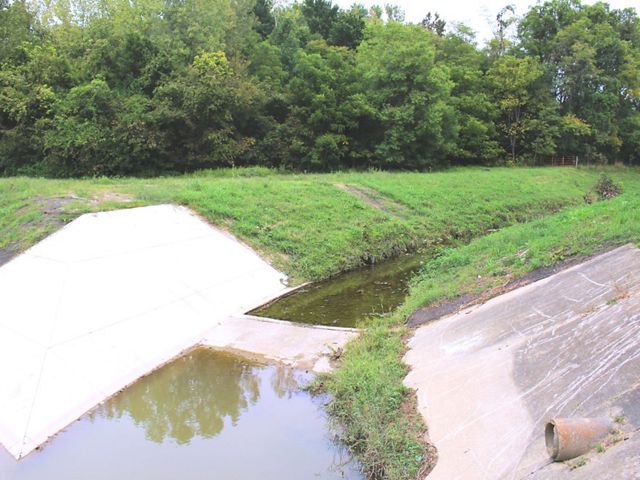
Calling On Community
Catherine Fitzgerald is also working to engage stakeholders who live and work throughout the watershed in order to identify and implement tangible strategies for restoring the Mill Creek watershed to health.
"The aim is to co-create ecological enhancement projects that have high conservation value, support multiple stakeholders’ goals, and benefit the community as a whole,” says Fitzgerald.
In addition to individual meetings with stakeholders, TNC is facilitating broader forums for engaging community in order to collect feedback.
Fitzgerald adds, “While not an explicit goal, I would be thrilled if this project lays the groundwork for creating a watershed group for Mill Creek. We hope this work can contribute to the larger narrative of people working to steward our natural and cultural heritage, and create an even more livable and vibrant community.”
Stand Up For Nature
Support our work to protect nature in Kentucky.
